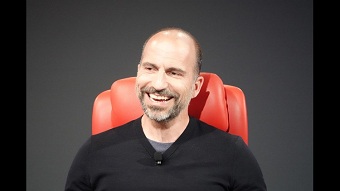Uber has introduced a series of changes aimed at improving the safety of drivers and riders as the ride-hailing company continues to grapple with reports of assault and breached privacy in its cars. “We want you to know when you get into that car, whether you’re a rider or a driver, that Uber’s got your back,” CEO Dara Khosrowshahi said at an event.
A feature called Ride Check also was introduced, which flags long, unexpected stops during a route. In such instances, Uber will send notifications to the driver and passenger to check that stop was requested. If there is cause for concern, either the driver or passenger can press an emergency button in the app. The company is also expanding the number of cities in which a driver or rider who uses the emergency button inside the app will automatically dispatch the location, license plate, and the make and model of the car to a 911 dispatcher.
In the year since taking over for ousted Uber founder Travis Kalanick, Khosrowshahi said he has tried to remake the culture at the company and transform Uber into what he hopes will be “the safest transportation platform on the planet.” The service can’t claim success yet. In July, it and rival Lyft said they fired a driver who livestreamed hours of his passengers’ rides without their knowledge or consent, making money off the ride-hailing apps as well as the Twitch livestreams.
In June, Denver police said an Uber driver fatally shot a passenger. Female riders filed a proposed class-action suit against the company, accusing it of poor driver vetting that led to thousands of female passengers enduring a range of sexual harassment, including rape.
Among other security safeguards, Uber says it is testing a voice activated system so that drivers can keep their eyes on the road and accept rides and communicate with would-be passengers hands-free.
Another new feature allows drivers to share their location with a spouse or loved one, while still keeping a passenger pick-up or drop-off information private. Uber says it will protect a passenger’s privacy by concealing specific pickup and drop-off addresses in the driver’s trip history. The driver app will only log the general area where a trip started and ended. A rider can also request a ride by giving cross streets, rather than supplying his or her actual address.
The new Ride Check feature also may automatically detect a crash. If the app notices a sudden spike in a vehicle’s acceleration — it does so by harnessing GPS, sensors in the phone and other trip data — it can send a notification to a driver and passenger to make sure they’re ok, and if required summon 911 emergency assistance. If though the incident is more of a minor fender bender, a passenger may not want to hang around but rather get to his or her destination as quickly as possible. In that case, the passenger can summon another Uber ride via the app; such a ride will be free.








